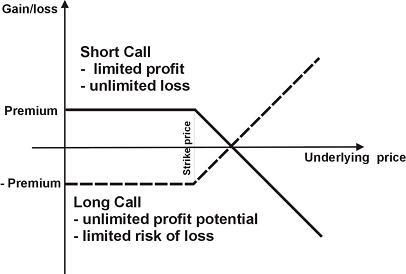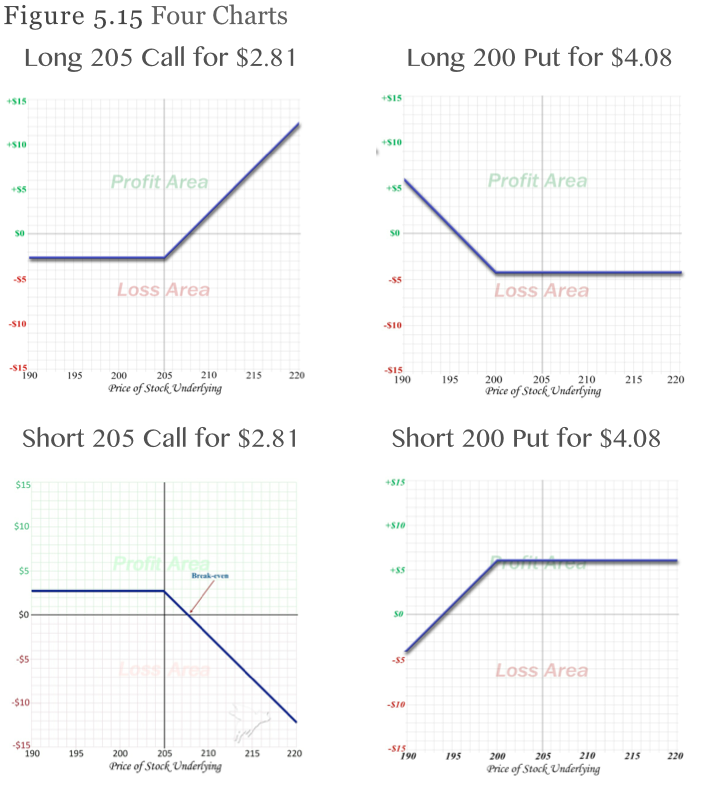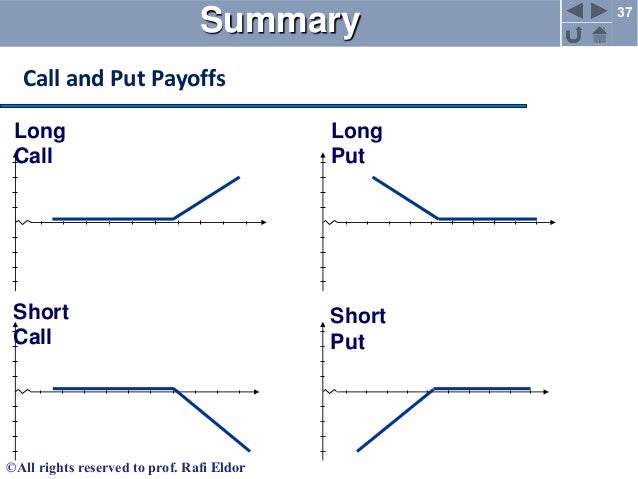Short call long put option strategy
Getting Started with Strategies Strategies Advanced Concepts. Why Add Options To Your Practice? An investor writes a call option and buys a put option with the same expiration as a means to hedge a long position in the underlying stock. This strategy combines two other hedging strategies: Usually, the investor will select a call strike above and a long put strike below the starting stock price.
There is latitude, but the strike choices will affect the cost of the hedge as well as the protection it provides. These strikes are referred to as the 'floor' and the 'ceiling' of the position, and the stock is 'collared' between the two strikes.
The put strike establishes a minimum exit price, should the investor need to liquidate in a downturn. The call strike sets an upper limit on stock gains. The investor should be prepared to relinquish the shares if the stock rallies above the call strike. Long shares XYZ stock. Short 1 XYZ 65 call. Long 1 XYZ 55 put. In return for accepting a cap on the stock's upside potential, the investor receives a minimum price where the stock can be sold during the life of the collar.
For the term of the option strategy, the investor is looking for a slight rise in the stock price, but is worried about a decline.

The investor adds a collar to an existing long stock position as a temporary, slightly less-than-complete hedge against the effects of a possible near-term decline. The long put strike provides a minimum selling price for the stock, and the short call strike sets a maximum profit price. To protect or collar a short stock position, an investor could combine a long call with a short put.
This strategy is for holders or buyers of a stock who are concerned about a correction and wish to hedge the long stock position. The maximum loss is limited for the term of the collar hedge. The worst that can happen is for the stock price to fall below the put strike, which prompts the investor to exercise the put and sell the stock at the 'floor' price: If the stock had originally been bought at a much lower price which is often the case for a long-term holding , this exit price might actually result in a profit.
The short call would expire worthless. The actual loss profit would be the difference between the floor price and the stock purchase price, plus minus the debit credit from establishing the collar hedge. The maximum gain is limited for the term of the strategy. The short-term maximum gains are reached just as the stock price rises to the call strike.
The net profit remains the same no matter how much higher the stock might close; only the position outcome might differ. If the stock is above the call strike at expiration, the investor will likely be assigned on the call and liquidate the stock at the 'ceiling': The profit would be the ceiling price, less the stock purchase price, plus minus the credit debit from establishing the collar hedge.
If the stock were to close exactly at the call strike, it would expire worthless, and the stock would probably remain in the account.
This strategy establishes a fixed amount of price exposure for the term of the strategy. The long put provides an acceptable exit price at which the investor can liquidate if the stock suffers losses. The premium income from the short call helps pay for the put, but simultaneously sets a limit to the upside profit potential.
Both the potential profit and loss are very limited, depending on the difference between the strikes. Profit potential is not paramount here. This is, after all, a hedging strategy.
The issues for the protective collar investor concern mainly how to balance the level of protection against the cost of protection for a worrisome period. In principle, the strategy breaks even if, at expiration, the stock is above below its initial level by the amount of the debit credit.

If the stock is a long-term holding purchased at a much lower price, the concept of breakeven isn't relevant. Volatility is usually not a major consideration in this strategy, all things being equal. Since the strategy involves being long one option and short another with the same expiration and generally equidistant from the stock value , the effects of implied volatility shifts may offset each other to a large degree.
Usually not a major consideration. Since the strategy involves being long one option and short another with the same expiration and generally equidistant from the stock value , the effects of time decay should roughly offset each other. Early assignment of the short call option, while possible at any time, generally occurs only just before the stock goes ex-dividend.
And be aware, a situation where a stock is involved in a restructuring or capitalization event, such as for example a merger, takeover, spin-off or special dividend, could completely upset typical expectations regarding early exercise of options on the stock. The option writer cannot know for sure whether or not assignment actually occurred on the short call until the following Monday. However, this is generally not an issue since the investor has stock to deliver if assigned on the call.
The collar offers more protection than a covered call , but at a lower up-front cost than a protective put. See both of these alternatives for additional details. This web site discusses exchange-traded options issued by The Options Clearing Corporation. No statement in this web site is to be construed as a recommendation to purchase or sell a security, or to provide investment advice. Options involve risk and are not suitable for all investors. Prior to buying or selling an option, a person must receive a copy of Characteristics and Risks of Standardized Options.
Copies of this document may be obtained from your broker, from any exchange on which options are traded or by contacting The Options Clearing Corporation, One North Wacker Dr.
Please view our Privacy Policy and our User Agreement.
Collar
Copyright Adobe, Inc. All Rights Reserved More info available at http: About OIC Help Contact Us Newsroom Welcome! Options Education Program Options Overview Getting Started with Options What is an Option? Program Overview MyPath Assessment Course Catalog Podcasts Videos on Demand Upcoming Seminars. Options Calculators Collar Calculator Covered Call Calculator Frequently Asked Questions Options Glossary Expiration Calendar Bookstore It's Good to Have Options Video OIC Mobile App Video Series.
OIC Advisor Resources Why Add Options To Your Practice? Long Call Calendar Spread. Long Put Calendar Spread. Long Ratio Call Spread. Long Ratio Put Spread. Short Call Calendar Spread.

Short Put Calendar Spread. Short Ratio Call Spread. Short Ratio Put Spread. Description An investor writes a call option and buys a put option with the same expiration as a means to hedge a long position in the underlying stock.
Outlook For the term of the option strategy, the investor is looking for a slight rise in the stock price, but is worried about a decline.
Summary The investor adds a collar to an existing long stock position as a temporary, slightly less-than-complete hedge against the effects of a possible near-term decline.
Motivation This strategy is for holders or buyers of a stock who are concerned about a correction and wish to hedge the long stock position. Max Gain The maximum gain is limited for the term of the strategy. Breakeven In principle, the strategy breaks even if, at expiration, the stock is above below its initial level by the amount of the debit credit.
Volatility Volatility is usually not a major consideration in this strategy, all things being equal. Time Decay Usually not a major consideration. Expiration Risk The option writer cannot know for sure whether or not assignment actually occurred on the short call until the following Monday. Related Position Comparable Position: Email Live Chat Email Options Professionals Questions about anything options-related?
Email an options professional now. Chat with Options Professionals Questions about anything options-related? Chat with an options professional now. REGISTER FOR THE OPTIONS EDUCATION PROGRAM. More Info Register Now. Getting Started Options Education Program Options Overview Getting Started with Options What is an Option?
The Collar Strategy Explained | Online Option Trading Guide
What are the Benefits and Risks? Sign Up for Email Updates. User acknowledges review of the User Agreement and Privacy Policy governing this site. Continued use constitutes acceptance of the terms and conditions stated therein.